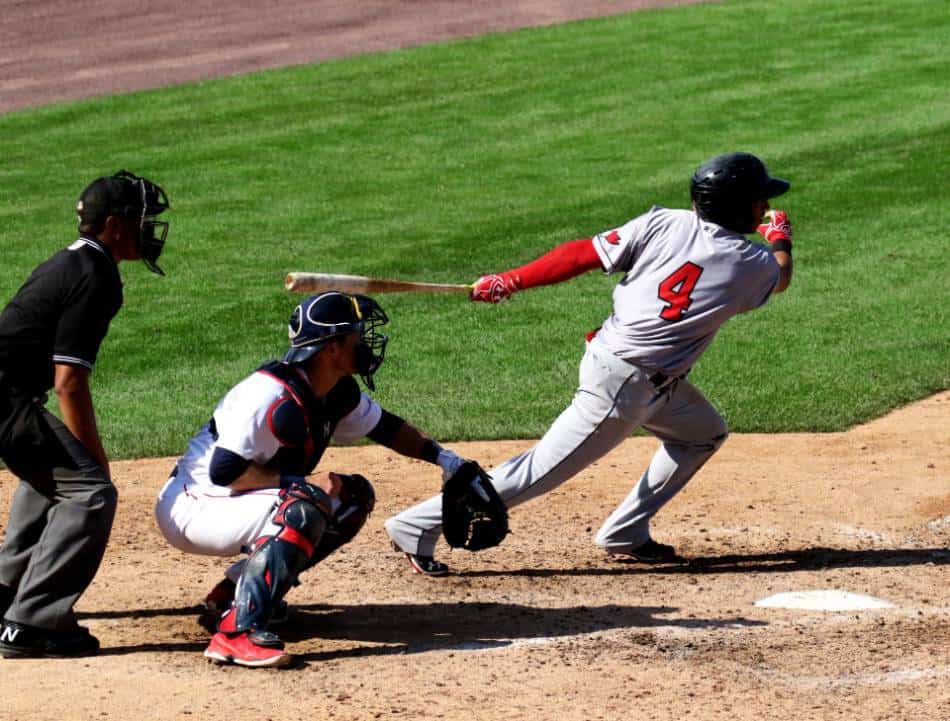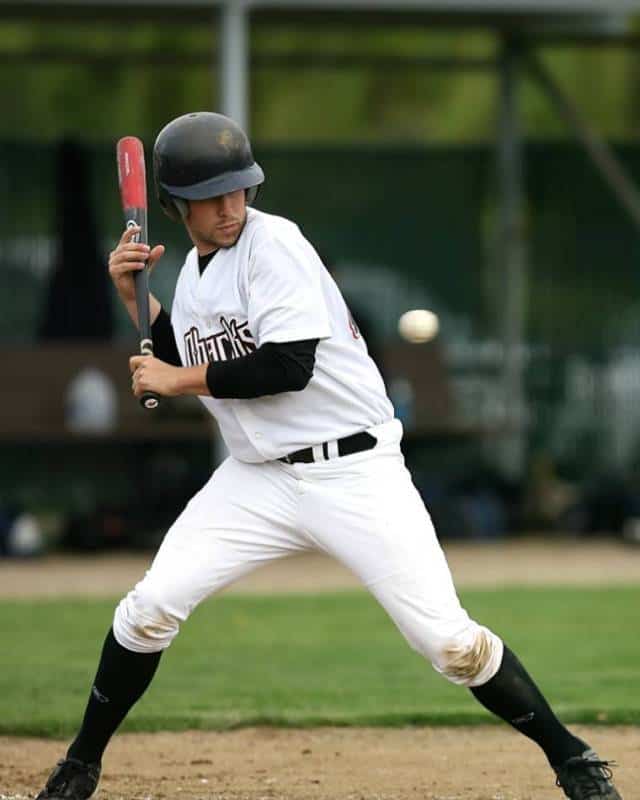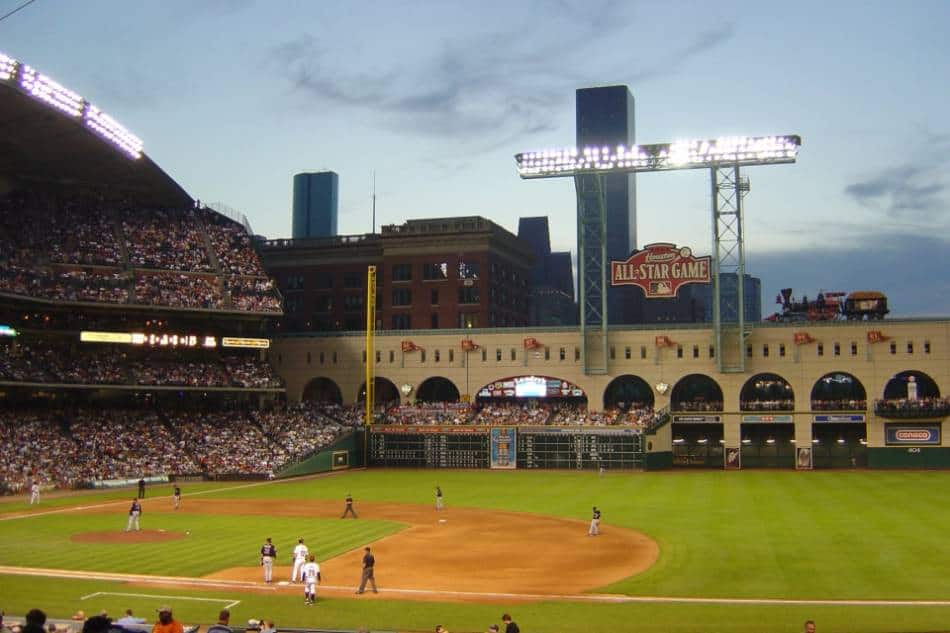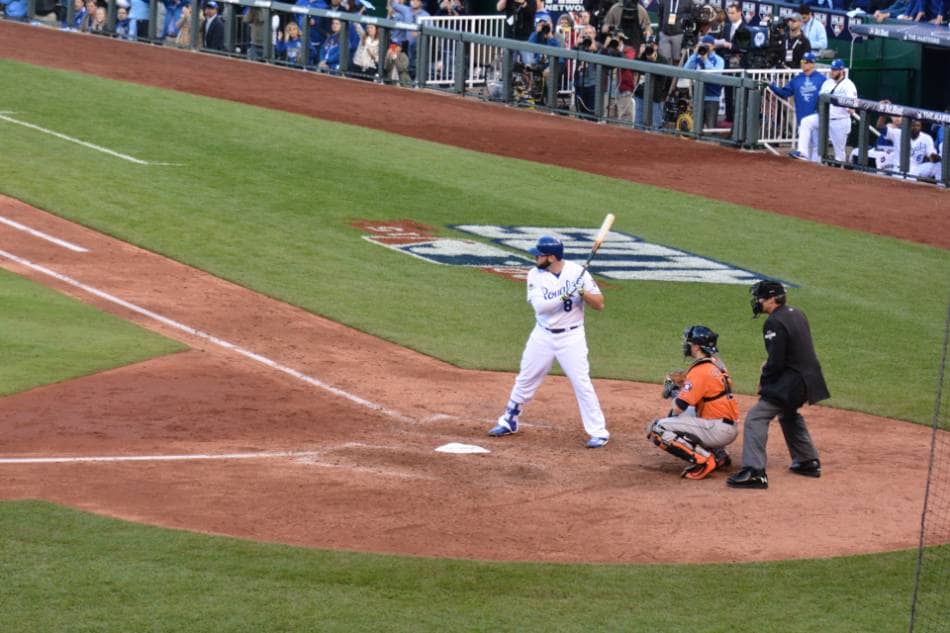
Baseball is unique in that when it’s a close game in the later innings, you can’t simply give your best player the ball and tell them to go make a play. Instead, the player due to bat has to be the one at the plate, which can create some less-than-desirable matchups.
However, there is an option for managers facing a bad matchup: the pinch hitter.
So, what is a pinch hitter in baseball?
A pinch hitter is a batter who takes an at-bat in place of the originally scheduled hitter, often in an important situation late in the game. Because they often hit in critical situations, the term originates because substitute batters are usually called upon “in a pinch.”
There are several reasons for a team to deploy a pinch hitter, and the manager making that decision has multiple options on how to proceed going forward.
With so much strategy going into the decision to have a player pinch-hit, there are multiple ways to approach these situations, which we’ll cover throughout this article.
What Are the Rules for Pinch Hitting in Baseball?

At most levels of baseball, pinch hitters are subject to the same rules that govern virtually all substitutions in baseball, including pitchers. That said there is one notable difference for pinch hitters, though we’ll get there shortly.
When a pinch hitter is announced into the game, the originally scheduled batter is officially replaced and may not return to the game in any capacity. The pinch hitter assumes the replaced batter’s position in the order unless he is replaced himself.
This is in line with any form of substitution, but there is one notable difference between pinch-hitting and replacing a pitcher.
When a pitcher is replaced by a reliever, the new pitcher must pitch to at least the hitter at the plate (except in the case of injury). However, a pinch hitter can be announced into the game and not be required to hit.
Not required to hit, you say? Yes, a pinch hitter can be announced, then replaced by another pinch hitter.
However, in this case, you burn two players off your bench, not one, because the original pinch hitter is replaced for the game despite not getting to the plate.
It’s a risky proposition, but in the right situation, you will see managers pull it off.
In the inning after using a pinch hitter, the manager will have a decision to make (unless the game ends), which in part will be dictated by which player was originally pinch hit for.
The player who was pinch-hit for must be replaced in the field, though there are a few different options for that. The simplest option is that the pinch hitter simply occupies the position of the player who was substituted for.
The pinch hitter can also go to a different position and another player already in the lineup simply shifts to the position previously occupied by the replaced player.
If a pitcher is pinch-hit for, there are more options. The pinch hitter can be replaced himself by the new pitcher (which is common), or stay in the game and go play a different position.
In this situation, a double switch is performed, where the pinch hitter stays in, occupying the spot in the order where the pitcher had previously hit.
However, a different player already in the game is forced to depart and the pitcher instead occupies a different spot in the batting order. This is done with the idea of the pitcher’s spot coming up later in subsequent innings, delaying the need for another pinch hitter.
Pinch Hitter vs Designated Hitter
On the surface, distinguishing between a pinch hitter and a designated hitter (DH) can be confusing since, in essence, they serve the same purpose: a hitter is batting in place of another player who would normally be there.
They’re similar enough that an early name for the position was Designated Pinch Hitter.
A pinch hitter is used purely to pinch-hit for a player who was originally in the starting lineup, oftentimes for just one at-bat, while a designated hitter is named before the game and takes all at-bats in place of the pitchers for their team and does not play the field.
A key difference between the two involves playing in the field. In many cases, particularly in the American League, pinch hitters will stay in the game after entering and play a defensive position.
The designated hitter, by design, does not play a defensive position, as they are a direct replacement for the pitcher in the batting order.
A designated hitter can move into the field to play a position, which occasionally happens. However, in that case, his team loses the DH for the remainder of the game, meaning that the pitcher must now hit in the spot vacated by the defender that the DH replaced in the field.
In a touch of irony, when a DH moves into the field, it sometimes leads to a situation where the newly-created pitcher’s spot in the batting order comes up and a manager opts to instead replace that pitcher with…a pinch hitter.
Why Do Teams Use Pinch Hitters in Baseball?

Pinch-hitting is a strategy that can win a team a game, or potentially cause issues later in long games as a result. Nonetheless, there are several reasons why teams use pinch hitters.
The most common reason teams use pinch hitters is that they want a different batter in a critical situation. However, teams will also pinch-hit if a pitcher is due to hit and the manager plans on replacing him the next inning, or if the game is out of hand and a team wants to use bench players.
The first situation is the most common situation for using pinch hitters. Oftentimes this is because the hitter at the plate is one of the weaker hitters in the lineup or does not match up well with the pitcher on the mound.
In a lot of cases, the hitter may not have the so-called “platoon advantage” (i.e. the pitcher throws from the same side the batter hits from), which may prompt a manager to substitute a batter who hits on the other side of the plate from the pitcher’s handedness.
In many late situations, a manager attempting to gain a platoon advantage may instead bring in a new pitcher in response.
When the team on defense subs in a new pitcher in response to a pinch hitter, it usually is to eliminate a potential platoon advantage.
In the case of a switch-hitter coming in to pinch-hit, the team on defense may elect to bring in a new pitcher with the opposite handedness to force that switch hitter to hit on his weaker side.
It is in these situations that a team may elect to use two pinch hitters in one plate appearance. For example, if a right-handed batter is due up against a right-handed pitcher, the offensive team may send up a left-handed batter.
In this case, the defensive team will often bring in a left-handed pitcher as a counter, erasing the platoon advantage.
Once this happens, the offensive team will sometimes substitute a new right-handed hitter, forcing the lefty to face a right-handed hitter, but at the cost of burning the left-handed batter for the rest of the game.
As for other pinch hitter scenarios, in the National League, pitchers still hit by rule (for now), so many pinch hitter situations involve replacing weak-hitting pitchers.
This may be in critical situations (runners on base in a tight game) where the situation forces a manager’s hand in removing a pitcher earlier than he wished.
However, in other scenarios, a pitcher may approach the end of his reasonable pitch count when his spot in the order comes up, so a manager may pinch-hit for him since his outing would have likely ended very soon anyway.
The last common situation in which pinch hitters appear is late in games that are already decided.
Sometimes, a team will give a few players (usually a catcher or one of their star players) the last few innings off in a blowout game, which may result in those players being pinch-hit for in later innings.
On rare occasions, a player who suffers an injury will pinch-hit shortly after being injured. Additionally, if a batter is injured mid-plate appearance and is replaced, a pinch hitter may finish the at-bat as well.
How Often Are Pinch Hitters Used in Baseball?
Most Major League Baseball teams carry only three or four extra batters on their bench, so if a team wants to use a pinch hitter, they have to be selective in how they deploy their extra men.
In 2019, MLB teams combined for 4,933 pinch-hit at-bats, or an average of just over two per game, or one pinch-hit appearance per team per game. These numbers are heavily skewed towards the National League because there was no designed hitter in the National League that year.
Looking at the team-by-team breakdown, it is easy to see how the DH would affect pinch-hitting numbers.
With the NL requiring pitchers to bat, they were pinch-hit for frequently, so as a result, NL teams used anywhere from 205 pinch hitters (Chicago Cubs) to 316 pinch-hitters (San Francisco Giants).
On the other side, because American League teams have nine legitimate Major League hitters in their lineup, the need for pinch hitters is greatly reduced.
As a result, in 2019, the Baltimore Orioles led the AL with 113 pinch-hit appearances, while the Kansas City Royals sent just 48 to the plate all season.
All told, American League teams averaged 77 pinch hitters each during the 2019 season, while National League squads deployed an average of 252, with the vast majority of those being for pitchers.
How Important Is Pinch-Hitting in Baseball?

As we established, pinch hitters are most commonly used because managers want to send a legitimate hitter to the plate in place of a pitcher, so naturally, the question is how important are the roles of pinch hitters?
There is not a lot of information available on the importance of pinch-hitting, but using Baseball Reference’s leverage index, it suggests that in 2019, pinch hitters appeared in situations that on average had 30% more leverage than the average in-game situation, indicating more important situations.
Does that sound confusing? Well, let me explain.
The leverage index uses data based on situations in-game (inning, score, outs, and runners on base, primarily) to determine how important a particular at-bat is.
It uses 1.0 as the baseline for a so-called “neutral” situation, so that a number above 1.0 represents a high-leverage situation, while a number below 1.0 is considered low-leverage.
In 2019, the average leverage index in pinch-hitting was 1.30, hence 30% higher leverage than the average situation.
When you look at just the American League, which removes most situations where pitchers are pinch-hit for, the leverage index jumps to 1.59, indicating that AL teams typically save pinch hitters for the most important situations.
That’s not to say those pinch hitters aren’t put in important situations in the National League, but just not quite as often relative to the overall number of plate appearances.
In 2019, NL pinch hitters had a collective leverage index of 1.22 indicating that they were still deployed in important situations, but they were often offset by many less-important situations where managers simply didn’t want their pitchers to bat.
You can also look at the shortened 2020 season, which featured a universal designated hitter, eliminating the need to pinch-hit for pitchers.
The numbers may be somewhat skewed with 7-inning doubleheaders and a schedule less than half the normal length, but in 2020, the league-wide pinch-hitting leverage index was 1.56, similar to the AL’s 2019 figure.
This begs the question: how effective are pinch hitters?
Well, it’s not easy to come into a game after sitting on the bench for a couple of hours and face a pitcher in the heat of a tight game, and not surprisingly it often doesn’t go too well.
While MLB as a whole batted .252 in 2019, pinch hitters batted just .222. In 2018, pinch hitters batted .212. In 2020, that number was a measly .207.
That goes to say that while hitting a baseball is arguably the hardest thing to do in sports, pinch-hitting is a little bit harder than that.
Historical Stats for Pinch Hitters
- The most prolific pinch hitter in MLB history is Lenny Harris, who holds the record for most pinch-hit at-bats (804) and hits (212), batting .264 in those at-bats.
- The most pinch-hit appearances in a season is 100, by Ichiro Suzuki of the Miami Marlins in 2017. The most pinch-hits in a season is 28, set by John Vander Wal of the Colorado Rockies in 1995.
- Dave Hansen of the 2000 Los Angeles Dodgers and Craig Wilson of the 2001 Pittsburgh Pirates hold the MLB record for pinch-hit home runs in a season with 7 each. The career record for pinch-hit homers is 23, set by Matt Stairs.
- The Major League Baseball record for highest career pinch-hitting batting average (minimum 100 at-bats) is by Gordy Coleman, who hit .350 in 120 career pinch-hit at-bats.
- The first known pinch hitter in MLB history was Mickey Welch, a Hall of Fame pitcher, who pinch-hit for the New York Giants on August 10, 1889—and struck out.
